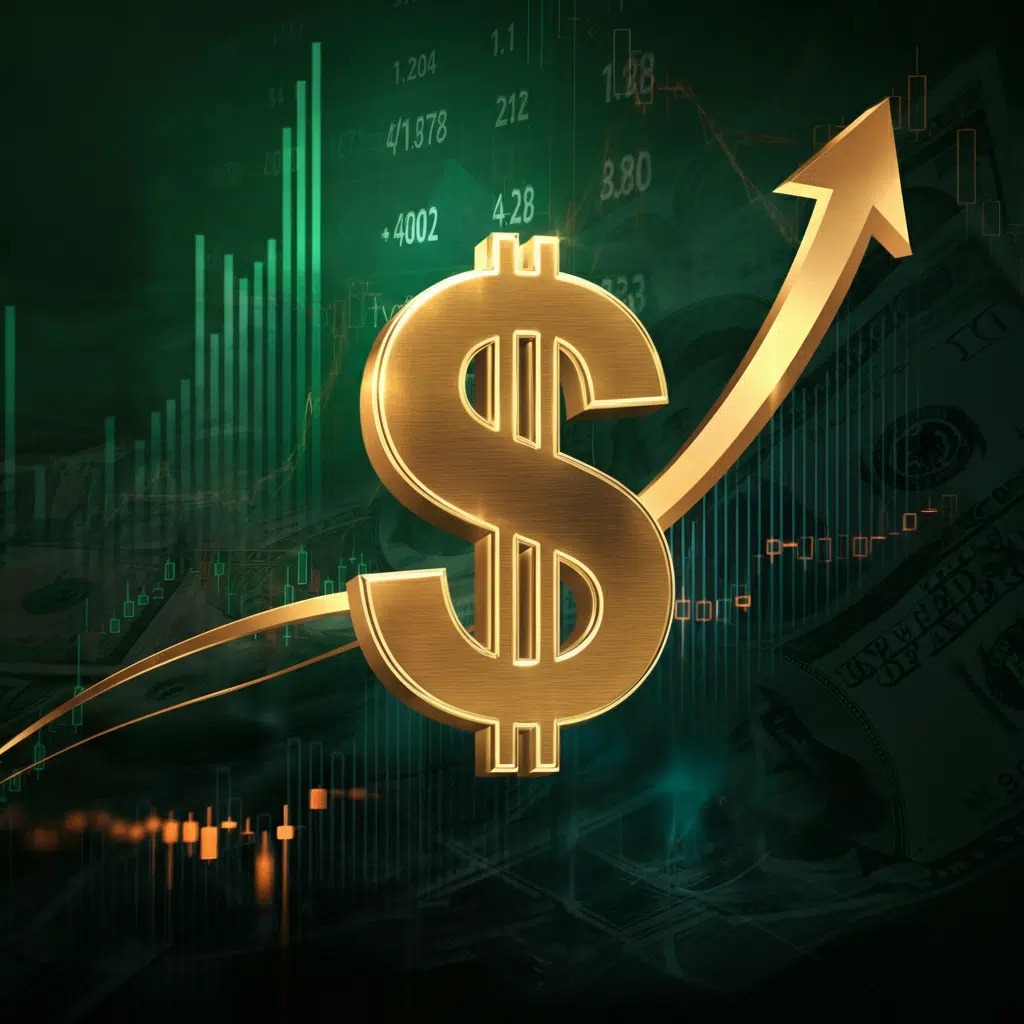The U.S. dollar has gained significant momentum, hitting a 13-month high and leaving other currencies in its wake. Investors worldwide are closely monitoring the Federal Reserve’s next moves, as anticipation mounts over interest rate strategies. Meanwhile, markets remain on edge, determining whether current global economic conditions signal a pivotal moment for currencies, equities, and even the cryptocurrency market.
Dollar Momentum Builds Amidst Speculation
On Friday, the U.S. Dollar Index rose by 0.08%, reaching 107.15—a peak last seen in October 2023. Earlier in the week, the index briefly climbed to 107.18, reflecting sustained strength amid varying global economic conditions. The rise marks a 3% gain for the dollar throughout November alone.
Key drivers include market uncertainties about the Federal Reserve’s ability to cut interest rates next month. According to CME’s FedWatch Tool, the likelihood of a 25-basis-point rate cut in December has decreased from 72.2% last week to 57.8%, underscoring the volatile sentiment around Fed decisions.
The shift in expectations comes as strong U.S. economic indicators, such as low unemployment and resilient consumer spending, continue to bolster the dollar’s appeal. Despite inflation cooling in recent months, the markets remain split on whether the Fed will pivot toward monetary easing or maintain restrictive policies to keep inflation fully in check.
Euro and Pound Lose Ground Against the Greenback
While the dollar shows no signs of slowing down, the euro and British pound have struggled. The euro, which constitutes a significant portion of the Dollar Index, weakened to $1.0469 after hitting a 13-month low of $1.0461 earlier this week.
What’s driving this euro decline? Political uncertainty in Germany, Europe’s largest economy, coupled with heightened tensions between Russia and Ukraine, has weighed heavily on investor confidence. Persistent worries about energy supplies and inflation dynamics have further undermined the euro’s performance.
Similarly, the pound fell to $1.25705, marking its weakest position against the greenback since mid-May. The U.K.’s struggles with slowing economic growth and persistent inflation are discouraging, particularly as the Bank of England grapples with how to balance growth and inflation policies effectively.
Japanese Yen Faces Continued Pressures
The dollar’s strength is especially pronounced when matched against the Japanese yen. Recent weeks saw the yen slide 7% against the dollar, breaching 156 yen per dollar for the first time since July. This sharp devaluation has reignited conversations about policy intervention by Japanese authorities.
Japan’s inflation, particularly core inflation, rose by 2.3% in October, maintaining consistent upward pressure on the country’s prices. While the Bank of Japan (BOJ) hinted at potential rate hikes, policymakers have been reluctant to take aggressive action. Governor Kazuo Ueda indicated the BOJ would closely monitor the yen’s movements as its depreciation complicates price stability and economic outlooks.
Nonetheless, any marginal recovery recorded by the yen on Thursday was quickly erased, with the dollar finishing at 154.84 yen on Friday, climbing 0.2% on the day. According to Capital Economics’ Marcel Thieliant, a December rate hike from the BOJ could be on the horizon, spurred by inflation trends and the yen’s ongoing weakness.
Bitcoin Follows a Different Story
While fiat currencies battle their global uncertainties, Bitcoin delivered another stellar performance, briefly hitting $99,388 before retreating slightly. The cryptocurrency has soared over 40% since the U.S. election earlier this month. It currently trades at approximately $99,028, teetering near the psychologically significant $100,000 mark.
The crypto market seems to be responding to shifting expectations regarding U.S. regulatory conditions. With Donald Trump set to return to the White House alongside a Republican-controlled Congress, optimism is high that the new administration will take a more lenient regulatory approach. Historically, this type of policy environment has encouraged the adoption and growth of digital assets.
Kevin Warsh has been floated as a potential Treasury Secretary or Federal Reserve Chair under Trump. Known for his market-friendly views, his potential nomination has contributed to the bullish sentiment surrounding cryptocurrencies like Bitcoin.
Market Volatility Looms as Global PMIs Await
Some market watchers believe global purchasing managers’ index (PMI) data expected later in the day might provide additional clarity about global economic activity trends. Analysts, however, suggest these data won’t likely shift the macro picture significantly.
Instead, markets will likely focus on U.S. PCE (Personal Consumption Expenditures) scheduled for release next week. PCE, which the Fed uses to gauge inflationary trends, could provide powerful cues about the likelihood—or unlikelihood—of a December rate reduction. This makes the coming days pivotal for traders and investors navigating the currency and equity markets.
New Zealand Dollar Highlights Outliers
Across the Pacific, the New Zealand dollar faced unique problems, hitting a one-year low of $0.58265. This decline reflects growing speculation that the country’s central bank may implement an outsized rate cut of 75 basis points during next week’s meeting. Such an aggressive move, though rare, would likely ripple beyond New Zealand, influencing broader conversations about rate strategies globally.
What Lies Ahead
The U.S. dollar, which has shown exceptional resilience against its peers, faces critical weeks ahead. Whether or not the Federal Reserve announces a rate cut in December could have profound implications for the greenback’s strength moving into 2025.
For global investors, understanding the interplay between U.S. policies, foreign exchange trends, and evolving economic conditions remains key. While some peripheral currencies may experience isolated recoveries, the overall spotlight is firmly fixed on the Fed and its approach to managing inflation and fostering economic stability.
The only certainty is that markets remain volatile, and indicators like global PMIs, PCE readings, and interest rate forecasts will shape the narrative for weeks to come. Whether it’s the dollar finding further strength or the yen clawing back ground, the environment is anything but predictable.


